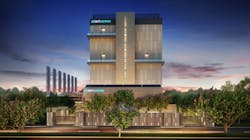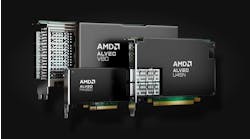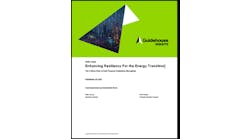Balancing Growth and Sustainability: India's Data Center Industry Takes on the Challenge
If analysts believed the company’s prospects in China were slowing, then why had the company’s stock risen so significantly since January 2023?
The network’s analyst had a quick answer: India.
He noted that investors and market analysts understood that India might be the world’s largest market for this already-massive company within three years as the country is “furiously” building out its technical infrastructure.
For data center providers and customers, this is exciting for many reasons. First, the growth in demand, both from businesses and the wider population, means India is starting to see phenomenal growth in its data center capacity.
In a recent report on the data center industry in India, JLL predicts that, “increasing use of digital technology, the migration of IT infrastructure to third-party providers, and the growing usage of data from new and existing channels will result in the addition of 678MW to the digital transformation industry between 2023 and 2025. This expansion will necessitate a demand for 9.1 million sq ft of real estate space, requiring a total investment of USD 4.8 billion in both the data centre infrastructure and real estate of the data centre sector.”
For data center operators, who provide the critical infrastructure that enables the world’s digital economy, many regions and countries offer enormous opportunities for serving new customers and populations: Brazil, Indonesia, Philippines, China, and the wider continent of Africa. But it’s possible that none can offer the greenfield starting points coupled with the large, enthusiastic population inviting new infrastructure, investment, and innovation that India can.
Of course, one major risk in such a massive opportunity is a reckless and environmentally unsustainable approach to rapid growth. Historically, delivering reliable, renewable power throughout India has been a challenge that has previously stifled digital infrastructure investment.
Fortunately, India has made great progress in generating and adopting renewable and carbon-free energy sources on a massive scale. The country is home to the world’s largest solar power plant and is activating a new solar park that may rank third in the world, capable of generating up to 2GW of solar power.
Other renewable energy sources complementing India’s solar power include wind, hydroelectric, and geothermal. Wind, for example, accounts for nearly 10% of the total installed utility power generation, with most of that generated between May and September, during monsoon season. India has committed to producing 50% of its electrical power from “non-fossil sources” by 2030, with 50GW of renewable energy capacity in the same timeframe.
However, this isn’t just about statistics. Behind all these numbers are people, businesses, cities, farms, families, and communities. And, in a way, that’s what makes the data center industry such a rewarding place to work. Of course, there are business opportunities in places like India, Brazil, Indonesia, Philippines, or across the African continent. But these markets cannot hope to realize their full potential in education, healthcare, manufacturing, agriculture, or any other facet of modern society without data centers to collect, process, and serve the vast amounts of data, computing, and networking that power these industries and institutions.
Looking forward, in virtually every region around the globe, we are seeing major shifts in the types of computing and technology that data centers will support, making it even more important for countries like India to rely on a stable, proximate, fast, and expansive data center and networking platform to be able to participate in – and even lead – the adoption of tools like AI, Machine Learning, Extended Reality, and more.
We are focusing on India here for a few reasons that, collectively, make it a uniquely inviting environment for data center providers:
- Scope & Scale: Data centers cannot exist in isolation and India is in the process of building out a national footprint of digital infrastructure to ensure access to power, networks, logistics, and local expertise to drive data center development.
- Supply & Demand: India is seeing demand for digital services from its consumers and businesses, but the demand for data center capacity in India, as evidenced by the world’s largest technology companies, is critical to the investment and the development needed to successfully deliver these services to one and a half billion people.
- Available & Sustainable: While it remains true today that India relies heavily on fossil fuels, trends show that the country is a major global innovator and early adopter in renewable and carbon-free energy sources, and data centers can serve to accelerate that transition, buying electrical power at scale and deploying new, clean technologies for cooling, waste management, water utilization, biodiversity, and more.
This combination of factors adds up to a market where data centers will find business growth and greater opportunities to contribute to the modernization of India, as well as other countries, markets, and populations that are rapidly adapting to an expanding digital economy. A prime example of this approach is AdaniConneX, the joint venture powered by EdgeConneX, the global data center provider with headquarters in the US, Amsterdam, and Singapore, and Adani Enterprises, a unit of Adani Group, one of the largest companies in India. The joint venture brings together the respective strengths of both parent firms, committed to delivering 1GW of sustainable data center infrastructure across the country by 2030. AdaniConneX employs sustainable power sourcing, high-speed networking, construction, and energy-efficient data center development and operation, to deliver an unprecedented infrastructure platform, with deployments ranging from hyperlocal to hyperscale that can supporting Cloud, AI, Machine Learning, Digital Media, and other critical applications and workloads, across the most populous country in the world.
It will come as no surprise that many of the largest companies in the world are waking up to the importance of working collaboratively to help India realize its full potential. For data center providers, that means making sure these companies – whether they are headquartered in India or anywhere around the globe – can have full confidence that the digital infrastructure required by 21st century business is in place, persistent, proximate, and pointing the way to a cleaner, faster, more powerful future. A future built on cooperation and collaboration, with benefits extending to more people in more places than at any time in history.
Phillip Marangella is Chief Marketing and Product Officer for EdgeConneX. EdgeConneX, is a global data center provider focused on driving innovation. Contact EdgeConneX to learn more about their 100% customer-defined data center and infrastructure solutions.






